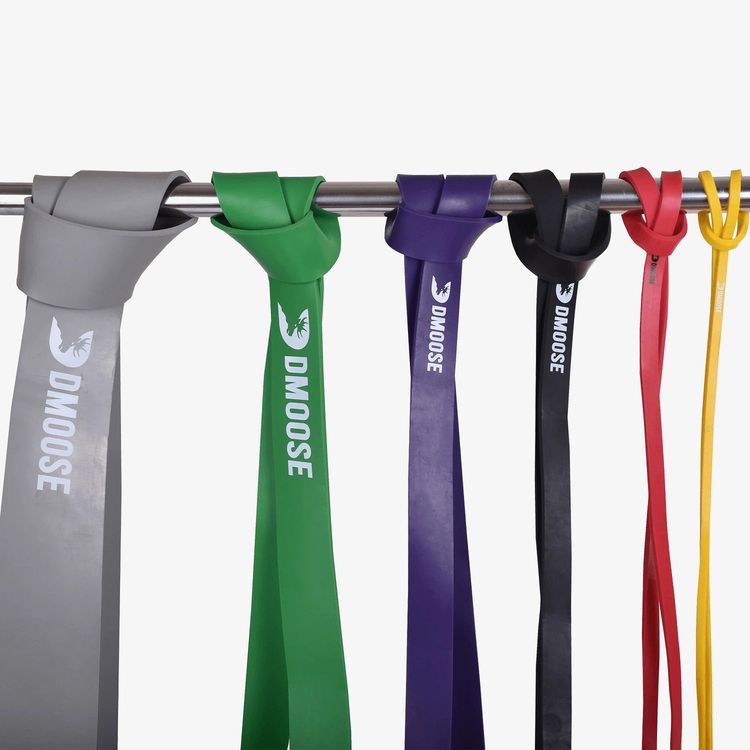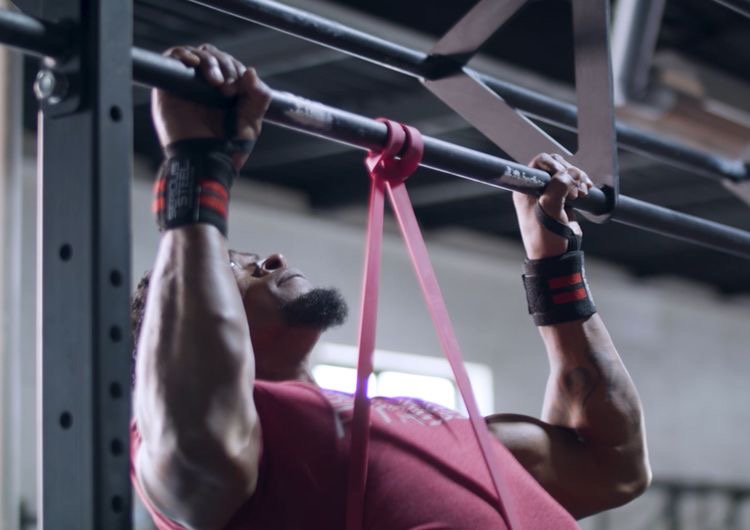The pull-up, a fundamental yet challenging bodyweight exercise, is revered as the ultimate test of upper body strength and control. While some athletes seem to effortlessly conquer multiple pull-ups, many individuals find themselves struggling to perform even a single repetition. However, there’s no need to be disheartened; with the right training and tools (like the pull-up assist band sets themself), anyone can master the pull-up and unlock the hidden potential within.
One such tool that has gained immense popularity among fitness enthusiasts and athletes is the Pull-Up Assist Band. These simple yet versatile resistance bands have proven to be a game-changer for both beginners and experienced fitness enthusiasts alike, providing the much-needed support and assistance to achieve the elusive pull-up.
In this comprehensive guide, we will delve deep into the world of pull-up assist band sets, exploring how they work, why they are effective, and how to incorporate them into your training regimen.
We’re an affiliate. We hope you love the products we recommend! Just so you know, we may collect a share of sales or other compensation from the links on this page. Thank you if you use our links, we really appreciate it!



Why Pull-Ups?
Before we delve into the specifics of pull-up assist bands, let’s take a moment to understand why the pull-up is revered as one of the most important upper body exercises.
The pull-up primarily targets the muscles of the back, specifically the latissimus dorsi (lats), rhomboids, and trapezius, while also engaging the biceps, forearms, and core muscles. This exercise promotes balanced upper body development, improves grip strength, and enhances overall body control.
Beyond the physical benefits, mastering the pull-up provides a tremendous sense of accomplishment. It represents the epitome of bodyweight strength, symbolizing the ability to lift one’s entire body weight using nothing but sheer upper body power.
However, despite the allure of this exercise, many individuals find it challenging to perform pull-ups, especially in the initial stages of their fitness journey. This is where pull-up assist bands come to the rescue, acting as a reliable support system to bridge the gap between struggling and conquering the pull-up.
How Pull-Up Assist Band Sets Work
Pull-up assist band sets are essentially thick, durable, and flexible bands made from natural latex or other high-quality materials. Their strength is measured in pounds of resistance, ranging from light to heavy, allowing users to choose the appropriate level of assistance based on their fitness level and goals.
The bands are designed to be looped around the pull-up bar, with one end forming a secure anchor point while the other creates a loop for the user’s feet or knees. By placing the feet or knees into the loop and hanging from the bar, the bands provide upward assistance during the pull-up motion.
As users pull their body weight towards the bar, the bands stretch and recoil, reducing the effective weight being lifted. This assistance eases the strain on the muscles, making it easier to complete the exercise and perform more repetitions than would be possible unassisted.
Benefits of Pull-Up Assist Band Sets
Pull-up assist band sets offer numerous advantages, making them an indispensable tool for individuals at various fitness levels:
Progression and Scaling: For beginners, pull-up assist bands offer a way to progress gradually, building strength and technique until they can perform unassisted pull-ups. For advanced athletes, the bands enable them to scale their workouts, adding resistance to challenge themselves further.
Building Strength and Muscle Activation: The bands help target and activate the correct muscles involved in the pull-up, promoting proper form and muscle engagement.
Reduced Risk of Injury: By providing assistance, the bands reduce the strain on joints and muscles, lowering the risk of injury during the learning process.
Versatility: Pull-up assist band sets are not limited to pull-ups alone; they can be used for various other exercises, such as push-ups, dips, and mobility drills.

Using Pull-Up Assist Band Sets: Techniques and Tips
Now that we understand the significance of pull-ups and the benefits of pull-up assist bands, let’s explore the various techniques and tips for effectively using these bands to enhance your pull-up training.
1. Selecting the Right Band Strength:
Choosing the appropriate resistance level is crucial for an optimal training experience. If the band is too strong, it may not provide enough assistance, and if it’s too weak, it might offer too much support, hindering your progress. As a general guideline, beginners can start with a heavier band to gain confidence and gradually transition to lighter bands as they become stronger. Advanced users can experiment with different band strengths to challenge themselves further.
Here are our personal picks for Pull-Up Assist Bands based on all the factors we discussed:
(Click on the photo to open the link)
2. Proper Band Placement:
Correct placement of the pull-up assist band is essential for a safe and effective workout. Ensure that the band is securely anchored to the pull-up bar, and when placing your feet or knees into the loop, make sure it is snug but not uncomfortably tight. The band should provide upward assistance while allowing you to maintain control throughout the entire range of motion.
3. Maintaining Proper Form:
While pull-up assist bands provide support, it’s crucial to maintain proper form throughout the exercise. Keep your core engaged, shoulders down and back, and elbows close to your body as you pull yourself up. Avoid excessive swinging or using momentum to complete the movement, as this can compromise the effectiveness of the exercise and increase the risk of injury.
4. Gradual Progression:
Just like any other exercise, mastering the pull-up with the help of assist bands requires patience and consistent effort. Aim to increase the number of unassisted repetitions gradually. As you get stronger, decrease the band’s assistance by opting for lighter bands or using fewer bands in combination.
5. Combining Bands for Customized Assistance:
To achieve personalized assistance, you can combine multiple bands of varying strengths. For example, using a heavier band for your feet and a lighter one for your knees can create a tailored level of support based on your individual needs.
6. Incorporating Eccentric Pull-Ups:
Eccentric or negative pull-ups are another valuable exercise to include in your training routine. Using the pull-up assist band, jump or step up to the top position of the pull-up and then slowly lower yourself down in a controlled manner. Eccentric pull-ups build strength and control during the lowering phase, which is often the most challenging part of the pull-up.
7. Balancing with Other Exercises:
While pull-up assist band sets are fantastic tools, it’s essential to balance your workout routine with other exercises that target different muscle groups. Incorporate exercises such as rows, push-ups, and core work to ensure comprehensive upper body strength development.

Sample Pull-Up Training Program with Pull-Up Assist Band Sets
Here’s a sample pull-up training program that incorporates pull-up assist band sets and helps you progress from assisted to unassisted pull-ups:
Note: Perform this routine 2-3 times per week, with at least one rest day between sessions.
Phase 1: Building Foundation (Weeks 1-2)
- Assisted Pull-Ups: 3 sets of 8-10 repetitions with a moderately heavy band.
- Eccentric Pull-Ups: 3 sets of 5 repetitions, lowering yourself slowly from the top position.
- Inverted Rows: 3 sets of 10 repetitions (using TRX straps or a barbell in a rack).
- Push-Ups: 3 sets of 12-15 repetitions.
Phase 2: Increasing Strength (Weeks 3-4)
- Assisted Pull-Ups: 4 sets of 6-8 repetitions with a lighter band.
- Eccentric Pull-Ups: 3 sets of 6 repetitions, emphasizing controlled lowering.
- Pull-Up Negatives: 3 sets of 3-5 repetitions, using the lightest band for the upward phase and lowering slowly.
- Assisted Dips: 3 sets of 8-10 repetitions with a dip assist band or machine.
- Inverted Rows: 3 sets of 12 repetitions.
Phase 3: Building toward Unassisted Pull-Ups (Weeks 5-6)
- Assisted Pull-Ups: 4 sets of 4-6 repetitions with the lightest band available.
- Unassisted Eccentric Pull-Ups: 3 sets of 3 repetitions, focusing on a slow and controlled descent.
- Pull-Ups: 3 sets of 2-4 repetitions without assistance (use bands only if necessary for the last few reps).
- Assisted Dips: 3 sets of 6-8 repetitions, reducing assistance if possible.
- Inverted Rows: 3 sets of 15 repetitions.
Phase 4: Unassisted Pull-Ups (Weeks 7 and beyond)
- Pull-Ups: 4 sets of 5-8 repetitions (aim to increase the number of repetitions over time).
- Eccentric Pull-Ups: 3 sets of 4-6 repetitions, focusing on slow and controlled lowering.
- Weighted Pull-Ups: Once you can perform 3 sets of 8 unassisted pull-ups, add additional weight using a weighted vest or dip belt.
- Inverted Rows: 3 sets of 12 repetitions (elevate feet for more challenge).
Remember to listen to your body and take adequate rest between sessions. Stay consistent, and over time, you’ll witness your progress skyrocket as you conquer the pull-up and uncover your true strength.
Expanding Your Fitness Arsenal
While pull-up assist bands are exceptional tools for building upper body strength and conquering the pull-up, it’s important to recognize that a well-rounded fitness journey often involves a variety of exercises and equipment. To achieve comprehensive results and address other fitness goals, such as weight loss and full-body conditioning, incorporating additional tools like dumbbells, kettlebells, and exercise balls can be highly beneficial.







